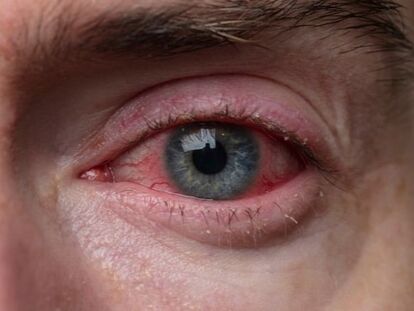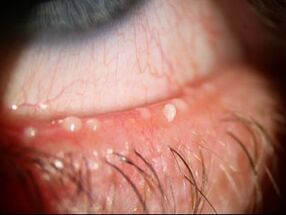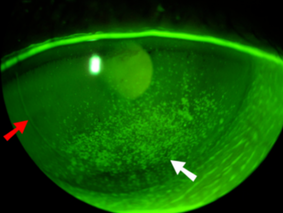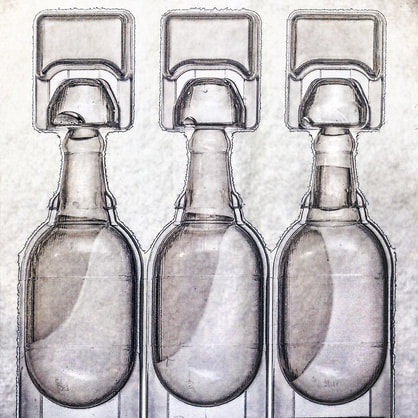Do I have dry eye disease?
Dry eyes disease can cause a range of symptoms including:
Dry eyes disease can cause a range of symptoms including:
- Tired, fatigued eyes
- Stinging, burning or gritty feeling
- A sensation of having something in your eye
- Filmy vision or mucous production
- Light sensitivity
- Redness of the eyeball or the skin around the eyes
- Blurred vision
- Difficulty with driving at night
- Watery eyes (yes this sounds silly, but when your eyes are irritated, they react and produce more tears)
- Severe cases can cause sharp pains and headache
When should I consult an Optometrist about my dry eyes?
- If you are noticing regular, new or severe symptoms of dry eyes.
- If you have red eyelid rims, crusting or dandruff around the eyes.
- If you are noticing that your vision is unstable, fluctuating throughout the days, especially when using screens and devices.
What causes dry eye disease?
There are many contributing factors to the development of dry eye disease.
Some over the counter eye drops
Some eye drops can exacerbate dry eyes. Many over the counter lubricants contain irritating preservatives(Benzalkonium chloride or BAK). Anti-redness drops contain decongestants that can actually make the problems worse.
Medications
Certain medications including isotretonins(roaccutane), anti-glaucoma drops, antihistamines, birth control or hormonal treatments, blood pressure medications, anti-depressants, nasal decongestants, pain relief medications.
Environment & Activity
Environmental causes such as dust, bushfire smoke, allergens, dry weather, wind and air conditioning. Computer use, and exposure to UV light and cigarette smoke can cause symptoms.
Medical conditions
Systemic conditions such as thyroid problems, rheumatoid arthritis and Sjogren's syndrome and allergy are associated with dry eye disease.
Medical Devices & Contact Lenses
C-Pap machines are notorious for causing dry eyes through the night. A well fitting mask will help prevent air leakage, but often patients will need some extra protection for their eyes. Contact lenses can exacerbate some types of dry eye disease.
Skin Conditions
Skin conditions such as rosacea, psoriasis etc.
Eye Surgery, Injury, or Infection.
Laser eye surgery, cataract surgery, eyelid abnormalities, bells palsy and eye injuries are common causes of dry eyes.
There are many contributing factors to the development of dry eye disease.
Some over the counter eye drops
Some eye drops can exacerbate dry eyes. Many over the counter lubricants contain irritating preservatives(Benzalkonium chloride or BAK). Anti-redness drops contain decongestants that can actually make the problems worse.
Medications
Certain medications including isotretonins(roaccutane), anti-glaucoma drops, antihistamines, birth control or hormonal treatments, blood pressure medications, anti-depressants, nasal decongestants, pain relief medications.
Environment & Activity
Environmental causes such as dust, bushfire smoke, allergens, dry weather, wind and air conditioning. Computer use, and exposure to UV light and cigarette smoke can cause symptoms.
Medical conditions
Systemic conditions such as thyroid problems, rheumatoid arthritis and Sjogren's syndrome and allergy are associated with dry eye disease.
Medical Devices & Contact Lenses
C-Pap machines are notorious for causing dry eyes through the night. A well fitting mask will help prevent air leakage, but often patients will need some extra protection for their eyes. Contact lenses can exacerbate some types of dry eye disease.
Skin Conditions
Skin conditions such as rosacea, psoriasis etc.
Eye Surgery, Injury, or Infection.
Laser eye surgery, cataract surgery, eyelid abnormalities, bells palsy and eye injuries are common causes of dry eyes.
|
Types of Dry Eye Disease
Evaporative Dry Eye Disease This is where the eyes are producing enough tears, but the protective oil layer isn't working well. This is often due to an irritated eyelid margin causing blockages of the meibomian glands that secrete the protective oil layer into the tears. Symptoms include blurred vision after working on screens or reading for 20 minutes. Gritty, red eyes, especially at the edge of the eyelids. Watering, and tearing especially on windy days. Grittiness, light sensitivity and foreign body sensations are also common. The most common causes of evaporative dry eye disease is blepharitis, meibomian gland dysfunction, demodex infestation and ocular rosacea. Aqueous Deficient Dry Eye Disease This is when the lacrimal gland is not producing enough of the watery layer of your tears. It is highly associated with Sjorgren's Syndrome and some types of autoimmune conditions. |
What to expect from a dry eye assessment
- Your optometrist will ask you some questions to understand the severity and impact on your day to day activities. They will also ask about general health and medications to see if there may be a cause that could be removed.
- They will asses your vision, then look closely at the eyelids and surface of the eye on their microscope.
- They are looking for redness, inflammation, the way your tears spread across the surface of the eyes.
- They will usually put some yellow and/or green drops into the eyes so they can see the tears and assess the health of the corneas and eyelids.
- They will apply some gentle pressure along the edge of the eyelid to see how well to asses the quality of the oil that the Meibomian glands are producing.
- If you need to be assessed for aqueous deficient dry eye, they may conduct a Schirmer's test. This measures how much fluid your tear glands are producing. It's a slightly funny feeling test, but isn't uncomfortable as your eyes are numbed with topical anesthetic beforehand.
- From these tests, your optometrist can determine what type of dry eye you have, and can prescribe tailored, evidence based treatments based on the results.
|
Treatment Options
Treatments will vary depending on type and severity. They may include:
|
For more information, we recommend visiting the Tear Film & Ocular Surface Society website here. They are the leading group that brings together international experience and expertise to share and further knowledge of dry eye disease, its causes and the best way to treat it.
Photo used under Creative Commons from docoverachiever





